#Diné nation
Text
About 100 people gathered to protest the shipments on U.S. Route 89 and Route 160. The shipments began on Tuesday with trucks carrying ore from the Pinyon Plain Mine to the White Mesa Mill in Blanding, Utah.
Transportation of uranium has been illegal in the Navajo Nation since 2012, when the late Navajo Nation President Ben Shelly signed into law the Radioactive and Related Substances, Equipment, Vehicles, Persons, and Materials Transportation Act. The law prohibits the transportation of radioactive materials through the Navajo Nation with exceptions for the cleanup and removal of left-over uranium ore from the numerous abandoned mines that litter the Nation.
Efforts to permanently ban new uranium mine development and transportation on or across the Navajo Nation have been an ongoing battle for years. In 2005, the Diné Natural Resources Protection Act banned uranium mining in the Navajo Nation. Earlier this year President Buu Nygren wrote a letter to President Joe Biden to address the growing concerns of uranium transportation across Navajo lands when Energy Fuels Resources Inc. began its mining operations at the Pinyon Plain Mine near the Grand Canyon.
“The transportation of uranium across Navajo lands, which not only endangers our communities but also contradicts our sovereign rights to enforce our laws and protect our territory,” Nygren said in his letter to Biden on March 14, 2024. “Uranium transport continues, posing an unacceptable risk to the well-being of our people and the sanctity of our land. Alternative routes exist that can and should be used to avoid crossing Navajo lands. The use of these alternative paths would demonstrate respect for our sovereignty and a commitment to our collective health and safety."
#Diné#Navajo#uranium#Navajo nation#Diné nation#Diné land#navajo uranium#arizona#ndn#native american#news#info#native americans#usa#u.s politics#American politics#native politics#native rights#self determination#sovereignty#native sovereignty
250 notes
·
View notes
Text
6K notes
·
View notes
Text
not to add to the oppenheimer discourse but i haven’t seen people talking about this in my part of tumblr (i’m sure people ARE, but i haven’t seen it).
a reminder that uranium mining in navajo nation to build nuclear weapons has caused environmental damage and health hazards that have still not been cleaned up to this day. this started in 1944 and lasted until the 80s. cancer rates DOUBLED in the navajo nation from the 1970s to the 1990s.
there are more than 500 abandoned uranium mines on diné land and the government has not done shit to clean anything up.
and to add insult to injury, the supreme court just ruled that the federal government does not have the obligation to ensure that diné people, which the federal government has plenary power over as a tribal nation in the united states, have running water.
the more you scratch at oppenheimer the worse it gets tbqh
#oppenheimer#oppenheimer discourse#i am not native but i work in tribal law and i work in icwa matters#as well as tribal sovereignty issues and tribal government#navajo nation#indigenous rights#tribal sovereignty#diné
252 notes
·
View notes
Text
hey indigenousblr does anyone speak Diné bizaad or have access to someone who does? i've been trying to translate something into the language and only have a few old dictionaries and some websites to parse words together with no idea if its actually correct. would absolutely love any help that could be provided!
54 notes
·
View notes
Text
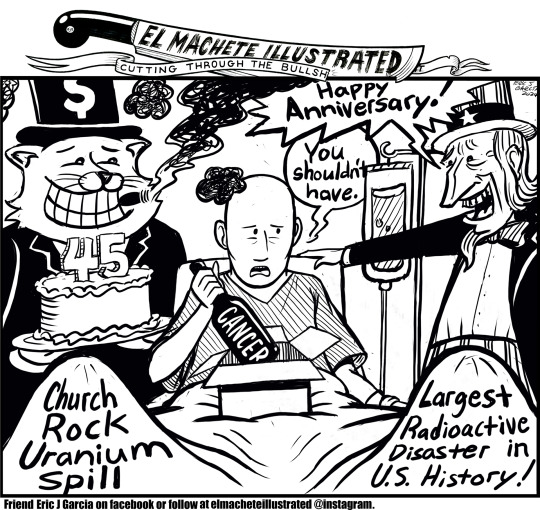
Churchrock New Mexico Uranium spill. 45 year #anniversary
#churchrock#new mexico#uranium#uranium spill#anniversary#toxic#toxic spill#toxic waste#man made disaster#environmental disaster#cancer#navajo nation#diné#pollution#contamination#greed#capitalism#usa
13 notes
·
View notes
Text
Today is Navajo (or, more correctly, Diné) Code Talker Day in the United States, so here's a short piece to mark the occasion.

136 notes
·
View notes
Text



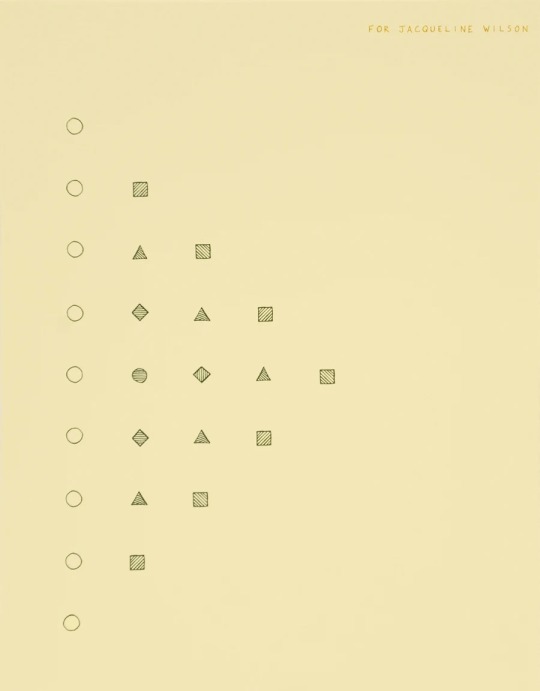


For Zitkála-Šá
Raven Chacon (Diné)
lithograph prints
18 notes
·
View notes
Text

Blue Corn Woman by Amber McCrary, a Diné poet and zinester.
#Native American Heritage Month#IT BEGINS!#I met her and she’s a delight#poetry#indigenous#indigenous poetry#indigenous art#native american#native art#feminist#sapphic#wlw#ndn#ndn tag#first nations#diné#feminist poetry#feminism
296 notes
·
View notes
Text


Having fun with this exercise :) Here's Jim Chee in the first episode of Dark Winds
#jim chee#kiowa gordon#dark winds#screencap study#he is such a loser i loveee him#my stuff#my fanart#navajo nation#diné
5 notes
·
View notes
Text
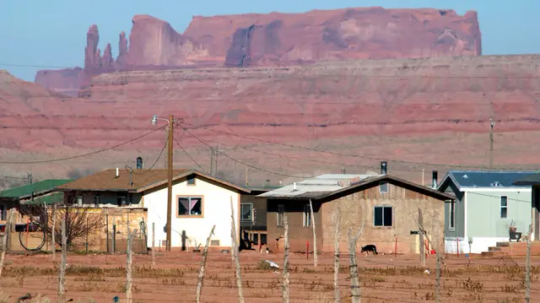
The Navajo Nation has received a $55 million grant to help Navajo homeowners with mortgage payments and home repairs.
Navajo Nation President Buu Nygren said as many as 901 homeowners should qualify for the funds.
The money comes from the American Rescue Plan Act, which provides nearly $10 billion to support homeowners throughout the country who face financial hardships due to the COVID-19 pandemic.
The program is open to Navajo homeowners of all income levels within the Four Corner states who live on both tribal lands and in urban areas.
The funds must be used within three years.

PHOENIX — Urban Navajos who own homes off the Navajo Nation will soon receive some unexpected help they’ll want but didn’t need to ask for.
On Sept. 11, Navajo Nation President Buu Nygren told 250 Phoenix metro area Navajo homeowners that the Nation received a $55 million federal grant to provide financial assistance to Navajo homeowners under various Homeowner Assistance Fund programs.
This includes mortgage payments and home repair assistance.
As many as 901 Navajo homeowners should qualify for the money for their homes, he said.
“Make sure we tell everybody,” Nygren told an overflow crowd in the shade outside the historic Phoenix Indian School Visitor Center, one of the remaining buildings from the 100-year-old Indian boarding school.
They were outside because a capacity crowd was already indoors awaiting the same announcement, and Nygren wanted to address those in the 105-degree F heat first.
The Homeowner Assistance Fund was authorized through the American Rescue Plan Act to provide $9.9 billion nationwide to support homeowners who face financial hardships associated with COVID-19, the Nygren said yesterday.
The funds were distributed to states, U.S. territories, and tribes. The Navajo Nation was awarded $55,420,097.
Most federally funded programs are restricted to low- and very-low-income households.
This program allows higher-income Navajo homeowners to receive financial relief from the economic effects of COVID-19, as well.
“Tell your relatives,” Nygren said. “Say the $55 million that came from our government was specifically for Navajo people who are homeowners.”
To launch the process, Nygren signed an agreement with Native Community Capital. The group is a Native-led and operated non-profit corporation that was selected as the sub-recipient to administer the Homeowner Assistance Fund Project activities on behalf of the Navajo Nation.
Native Community Capital is certified by the U.S. Department of the Treasury as a Native Community Development Financial Institution and is a licensed mortgage lender in Arizona and New Mexico.
The program is designed for both higher-income and medium-income homeowners, Native Community Capital CFO Todd Francis said.
As an example, a family of four in Maricopa County in Arizona earning as much as $132,450 a year may be eligible for the tax-free, non-repayable funds to pay their mortgage or repair their homes, he said.
The program will benefit Navajo relatives and their families who reside in both rural remote locations and those in the urban areas of Phoenix, Albuquerque, Denver, Salt Lake City, surrounding smaller cities and towns, and wherever Navajo homeowners live off-reservation, said NCC CEO Dave Castillo.
A significant lack of investment in tribal communities compared to non-Indian communities has resulted in a critical absence of homeownership on tribal lands, particularly for higher-income Native households, he said.
As a result, Navajos with higher incomes tend to purchase or build homes off the Navajo Nation where they can qualify for loans and mortgages to build equity and wealth.
The Center for Indian Country Development reports that 78% of Native people live outside of tribal trust land in counties surrounding their homelands. It is these families the HAF Project will seek to support, Castillo said.
Nygren said the Navajo HAF Project will provide financial assistance to 901 eligible Navajo homeowners to use for qualified expenses in five activities for the next 36 months.
The program will provide financial assistance to eligible Navajo homeowners in the four-state region of Arizona, New Mexico, Utah and Colorado.
Each eligible applicant could receive a maximum amount of $125,000 of combined assistance under various programs.
These include:
Monthly mortgage payment assistance to a maximum assistance level of $72,000 per participant. This is for Navajo homeowners who are delinquent in mortgage payments or at risk of foreclosure due to a loss of household income.
Mortgage reinstatement assistance would give a maximum assistance of $50,000 per participant to those who are in active forbearance, delinquency default status, or are at risk of losing a home.
Mortgage principal reduction assistance that would assist up to $100,000 for those who find the fair market value of their home is now less than the price they paid for it and now may result in a loss when it is sold.
Home repair assistance that would give $100,000 to those who need significant home repairs.
Clear title assistance of up to $30,000 for grant assistance to receive a clear title of their primary residence.
In his 2022 presidential campaign, Nygren committed to helping urban Navajos who have said for years that they felt underserved by the tribal government. He said this grant addresses that.
He said one of his administration’s next goals is to buy or construct a building owned by the Navajo Nation in the metro area to serve urban Navajo Phoenicians.
“Wouldn’t it be nice if we used the entire $55 million this year?” Nygren asked. “I know you committed to live here and to take care of your family. I see a lot of familiar faces and I understand this is where your jobs are. We want you to have access to resources.”
Castillo urged applicants to be sure their applications were complete and submitted early.
“One thing we want to emphasize is to be ready when the information is being requested on the checklist,” he said. “Make sure you have your documents prepared and you get it to our licensed professionals that will be working with you. If you do not, the application will expire in 30 days.”
He said the program has just three years to deploy the $55 million.
“It seems like we could do that quickly but we can only do it quickly if you help us, if you’re ready, and if you submit the information that’s necessary.”
Debbie Nez-Manuel, executive director of the Navajo Nation Division of Human Resources, said visits to other urban areas will be planned, scheduled, and announced by Native Community Capital.
The funds must be used within three years.
So does any of this money go to the Black Indians Tribes? @militantinremission
maybe y'all should start asking for your cut right now cause they got it
#Navajo#Navajo Nation#First Nation#Chief Buu Nygren#Nygren reveals $55 mil for Diné homeowners#HAF#The Center for Indian Country Development#Navajo Nation has received a $55 million grant to help Navajo homeowners with mortgage payments and home repair#@MilitantinRemission
19 notes
·
View notes
Note
Why would Alfred speak Diné? Did he learn it from the Navajo Code Talkers from World War II? I hope I’m not sounding rude, I would just like to understand where this headcanon comes from.
it's not rude at all, I actually do want to explain it! especially because the Navajo/Diné Nation was very much on "Mexican land" before "becoming American land".
my hc is that Alfred began learning and speaking Diné Bizaad during the California gold rush, its statehood, and the manifest destiny movement (all events occurring in 1845-55) because his Anglo overseers and settlers wanted him to become familiarized with the American West (I hc he was VEHEMENTLY against it and sabotaged it in every way he could).
he gradually got closer to Diné people altruistically and interacted with their traditions and culture (this is absolutely where he got the custom to smudge-- yall see how much he hates ghosts!!). by the time California, Nevada, Arizona, etc. became states, he was wholly engrained into the Diné community.
his involvement with the Diné Nation did not end there; there was the "finding" of the Grand Canyon by Anglo settlers, the building of the Hoover Dam, and INDUBIOUSLY the diné code talkers. in modern times, he involves himself with the diné community for conservation efforts but most importantly, to celebrate his people (hc that he ever only told the code talkers and n8v elders of his immortality/who he is).
#hetalia#hws america#i will also add that it began as a self-indulgent hc bcuz as a n8v mexican my neighboring n8v community is mexican-paiute-diné ppl#the post got SUPER LONG but I also hc that in accordance to the hopi origin story that aj was born in the center place-- being chaco canyon#the diné nation is the largest native American community so I assume it influenced a lot of al's identity#kikitalkz
17 notes
·
View notes
Text
source
On Friday, a group of protestors walked on Highway 89 in Cameron, Ariz., protesting Pinyon Plain Mine owner Energy Fuels trucking uranium ore through the Navajo Nation to Utah.
Uranium has a long history of impacts on the Navajo Nation and its people since the 1940s.
"We've seen the effects of these things in the past on our land, the spills into our rivers, into our communities, the residual effects on our on our health, of our children, our elders," Cameron resident Adair Klopfenstein said. "It's awful, and we don't want it to happen again."
The Pinyon Plain Mine, formerly known as Canyon Mine, began mining uranium ore in December and is expected to be actively mining for at least five years. The company had told 12News at the end of June it would start transporting the uranium ore to a mill in southeast Utah in July or August.
That hauling appears to have started before the pause was put in place.
"I call it illegal smuggling across our border and then through the Navajo Nation," Navajo Nation President Buu Nygren said.
And from June:
#Diné#Navajo#Navajo nation#news#human rights#u.s politics#american politics#current events#ndn#indigenous#Diné resistance#U.S Imperialism#Imperialism#solidarity#intersectional#systemic racism#treaty violation#call to action#indigenous ally#native ally#ally#allyship#kamala harris#joe biden#Harris 2024#genocide joe#vote
21K notes
·
View notes
Text
youtube
Been listening to this all afternoon! It's got a lot of amazing audio from Palestinian and Indigenous activism
#christmas#free palestine#palestine#the red nation#indigenous#indigenous issues#indigenous communities#protest art#merry fucking christmas#happy fuckings holidays#indigenous rights#indigenous activism#indigenous history#arab#arab history#tewa#pueblo#turtle island#navajo#diné#indigenous resistance#anti colonialism#decolonization#apache#palestinian poetry#palestinian writers#free gaza#gaza#youtube#indigenous art
7 notes
·
View notes
Photo



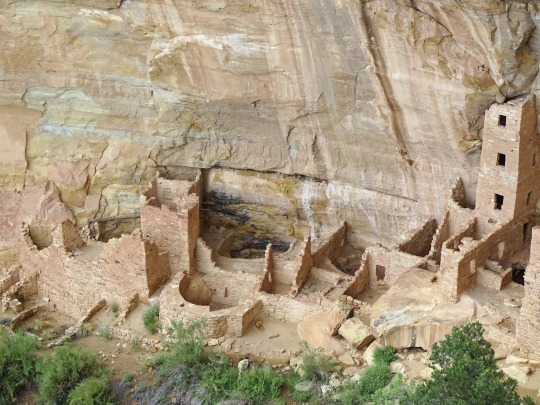
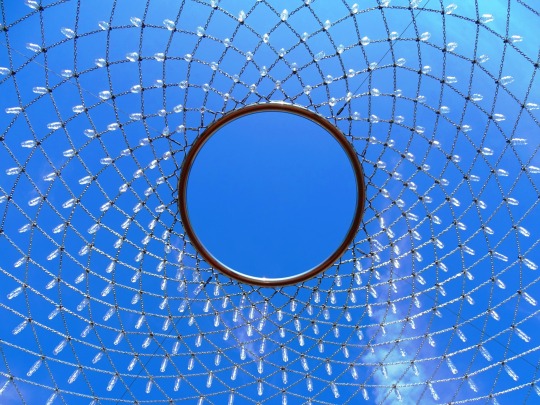


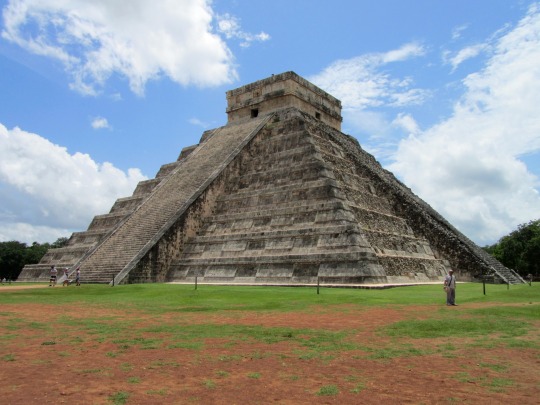


International Day of The World's Indigenous People
The International Day of the World’s Indigenous People on August 9 pays tribute to the indigenous communities of the world. The latest data reveals that there are about 370 to 500 million indigenous people living in 90 countries. These communities are noted to have their own unique set of languages, traditions, cultures, and governing systems. For many indigenous groups, the systems that their ancestors have followed for centuries have stood the test of time by serving them with positive outcomes to date. Many indigenous people’s special bond and connection with nature have also led to the protection of the general environment. However, on the other side, several indigenous communities face difficulties due to a central government’s covert and overt attempts to control their lives. This has led to indigenous people’s rights violations where they would have otherwise ensured peaceful and harmonious lives for them.
History of International Day of The World's Indigenous People
The first International Day of the World’s Indigenous People was officially celebrated in August 1995. The day had been brought into existence when the 49/214 resolution was passed by the U.N. General Assembly on December 23, 1994. August 9 was chosen as the commemorative date because that was when the first meeting of the U.N. Working Group on Indigenous Populations of the Sub-Commission on the Promotion and Protection of Human Rights was held. Every year, the day is honored by governments and organizations holding education forums and conferences to meet and discuss the social issues faced by indigenous groups worldwide. People are also given information on any ongoing and/or upcoming activities and projects that are being undertaken to help the target communities. Every year, the theme changes to shed light on a pressing topic, and the theme for the year 2021 was ‘Leaving no one behind: Indigenous peoples and the call for a new social contract.’
The social contract theme is a call for accountability in the general populations’ interaction with the indigenous communities and their resources. Over the years, many indigenous groups have found themselves to be on a disadvantageous terrain in the face of urban development projects that have destroyed and denigrated their lands and territories. The central governments and builders involved in such projects never sought permission from or even spoke with the indigenous communities before they took the developmental steps. Organizations and agencies like the U.N. and UNESCO have made efforts for constitutional/legislative reforms for dominant indigenous groups. Yet, the efforts must be focussed on bringing everyone together in the cause, leaving none behind.
International Day of The World's Indigenous People timeline
1982 First U.N. Meeting on Indigenous People
The U.N. holds the first meeting on indigenous people by forming the U.N. Working Group on Indigenous Populations of the Sub-Commission on the Promotion and Protection of Human Rights.
1995 International Day of the World’s Indigenous People
The first International Day of the World’s Indigenous People is celebrated by the U.N. General Assembly.
2005 - 2015 Indigenous People’s Decade
The U.N. proclaims 2005 to 2015 to be the ‘Decade of Action and Dignity’ for the indigenous communities.
2019 Indigenous Languages Year
After a startling 2016 report on the danger of more than 2,000 indigenous becoming extinct, the U.N. declares 2019 to be the International Year of Indigenous Languages in order to create awareness.
How To Observe International Day of the World’s Indigenous People
Learn about indigenous groups
Learn an indigenous language
Stand by indigenous groups
History related to indigenous people is always interesting to read and learn about. They have their own sets of beliefs, customs, languages, and cultures. Their daily lifestyles are also often connected with nature, be it animals, trees, certain plants, or lakes/rivers.
The U.N. declared the years 2022 to 2032 the decade for indigenous languages. The goal is to bring to attention the dying languages, since most of them are not taught in schools or are used by the general public. Losing a language is losing an important facet of the history and culture of a people.
The best way to celebrate this day and the rest of the year is by vowing to stand by indigenous groups. The indigenous people have the right to freely choose however they wish to live, much like any other living being on this planet. Protecting their rights also in turn protects your rights in the long run.
5 Interesting Facts About Indigenous People
80% of the world’s biodiversity
4,000 indigenous languages
High poverty rates
Short life spans
Leaders in protecting the environment
Around 80% of the world’s biodiversity is in places where indigenous groups are living.
The 5,000 indigenous communities in the world are credited with having about 4,000 languages.
While the indigenous communities account for only 5% of the world’s population, they make up 15% of the world population that is living in poverty.
Indigenous communities, due to a lack of awareness, have shorter life spans as they die of preventable diseases like malaria and H.I.V.
Studies have shown that the fauna and flora, and biodiversity thrive and flourish where indigenous people reside.
Why International Day of the World’s Indigenous People is Important
It’s a celebration of indigenous people
It’s a celebration of indigenous languages
It’s a celebration of the freedom to live
Indigenous people form an essential and crucial part of not only our planet’s history, but also how human beings have come to make systems to lead fruitful lives. The indigenous people’s cultures, customs, and traditions are interesting to learn about for their uniqueness and for what they teach us about the universe and the bigger picture.
Language, at its core, builds the identity of a people. The involvement of the different phonetics, grammar rules, and formal/informal styles can tell one a lot about where a community has come from, and how their history has shaped them. The same is the case with indigenous languages. The problem lies in their endangerment, and this is why we must strive to preserve them.
The freedom to practice our rights on a piece of land that has shaped our communities for centuries should not be taken away from anyone. The freedom to practice our customs, traditions, and general lifestyles is another important aspect of living a worthwhile life. For these very reasons and many others, we should join indigenous people in their right to live and flourish however they like.
Source
#Native American flute#Monument Valley Navajo Tribal Park#Arizona#USA#Dinosaur National Monument#Diné#Mesa Verde National Park#Colorado#Square Tower House#Jamestown S'Klallam Tribe#Wabanki Canoe#Mexico#Chichén Itzá#The Gather-Ring by Manuel Báez and Charlynne Lafontaine#Ottawa#Cliff Palace#original photography#tourist attraction#landscape#International Day of The World's Indigenous People#9 August#Canada#jingle dance#DayOfTheWorldsIndigenousPeople
11 notes
·
View notes
Text
I want to draw the Glamrocks and the DCA as PowWow dancers so bad but that would be just… so much detail. So mmmm it’ll have to wait.
But hear me out!
Sun and Moon: hoop dancers (Ojibwe/Anishinaabe)
Roxy: fancy shawl (Lummi)
Chica: Jingle dress (Lakota Sioux)
Monty: men’s fancy (Seminole)
Freddy: lead drummer/singer (Eastern Tsalagi/ Cherokee)
DJMM: Master of Ceremonies (Navajo/Diné)
And their regalia is just in their usual colors.
#fnaf#fnaf pow wow au?#this all came from my regular burning desire to make a jingle dress#and thinking that Chica would be such a great jingle dress dancer#I do want to do these some time#since having a little indigenous flavor to the Glamrocks would be awesome#and I want to subject y’all to electric pow wow#if you haven’t heard modern native music you are Missing Out#look up Halluci Nation/a Tribe Called Red#my tribe headcannons for each do have their reasons#but they’re just my biases#like of course gotta rep my tribe with Freddy#but also#Monty as a Seminole because duh#and Roxy would look gorgeous in PNW styles#and the Navajo always pop off at PowWow so of course we need a Diné MC#fnaf sb#dca fandom
11 notes
·
View notes
Text
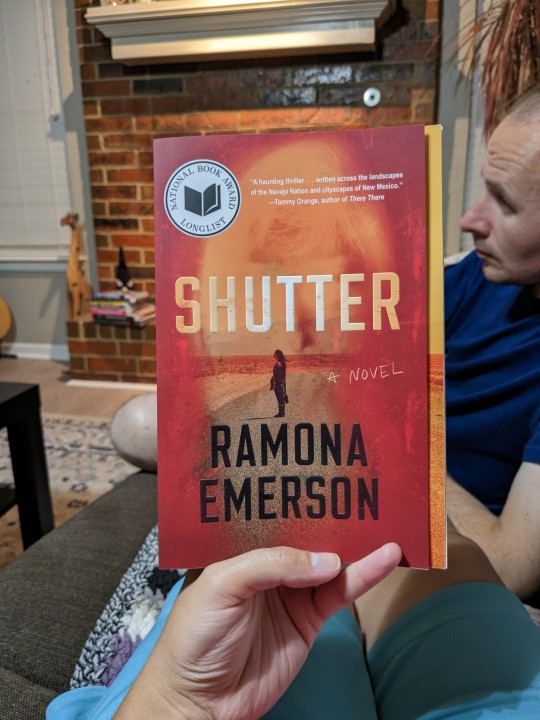
Just Finished: Shutter by Ramona Emerson
A story by a Diné woman about a Diné woman who is a forensic photographer. She can also see and hear ghosts, something she's been able to do all her life and she has had to hide that she can, with death such a taboo subject for Diné.
I am Diné myself, Navajo, and I was excited to see a book written about and by Diné woman! It's more of a mystery and less of a fantasy and so it took me a bit to get into it, but once I did I devoured it! This is a really good book and I really really hope Ramona Emerson writes more!
What about a book draws you in, if it's not your type of book you read?
#shutter#ramona emerson#diné#book review#book#book talk#booklr#mystery#diverse books#diverse authors#native american#native american author#navajo#navajo nation
9 notes
·
View notes